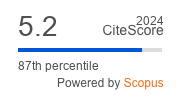Article | Open Access
Quantification 2.0? Bibliometric Infrastructures in Academic Evaluation
| Views: | 3298 | | | Downloads: | 2092 |
Abstract: Due to developments recently termed as ‘audit,’ ‘evaluation,’ or ‘metric society,’ universities have become subject to ratings and rankings and researchers are evaluated according to standardized quantitative indicators such as their publication output and their personal citation scores. Yet, this development is not only based on the rise of new public management and ideas on ‘the return on public or private investment.’ It has also profited from ongoing technological developments. Due to a massive increase in digital publishing corresponding with the growing availability of related data bibliometric infrastructures for evaluating science are continuously becoming more differentiated and elaborate. They allow for new ways of using bibliometric data through various easily applicable tools. Furthermore, they also produce new quantities of data due to new possibilities in following the digital traces of scientific publications. In this article, I discuss this development as quantification 2.0. The rise of digital infrastructures for publishing, indexing, and managing scientific publications has not only made bibliometric data become a valuable source for performance assessment. It has triggered an unprecedented growth in bibliometric data production turning freely accessible data about scientific work into edited databases and producing competition for its users. The production of bibliometric data has thus become decoupled from their application. Bibliometric data have turned into a self-serving end while their providers are constantly seeking for new tools to make use of them.
Keywords: bibliometrics; big data; digital infrastructures; higher education; quantification
Published:
Issue:
Vol 8, No 2 (2020): Quantifying Higher Education: Governing Universities and Academics by Numbers
© Anne K. Krüger. This is an open access article distributed under the terms of the Creative Commons Attribution 4.0 license (http://creativecommons.org/licenses/by/4.0), which permits any use, distribution, and reproduction of the work without further permission provided the original author(s) and source are credited.


